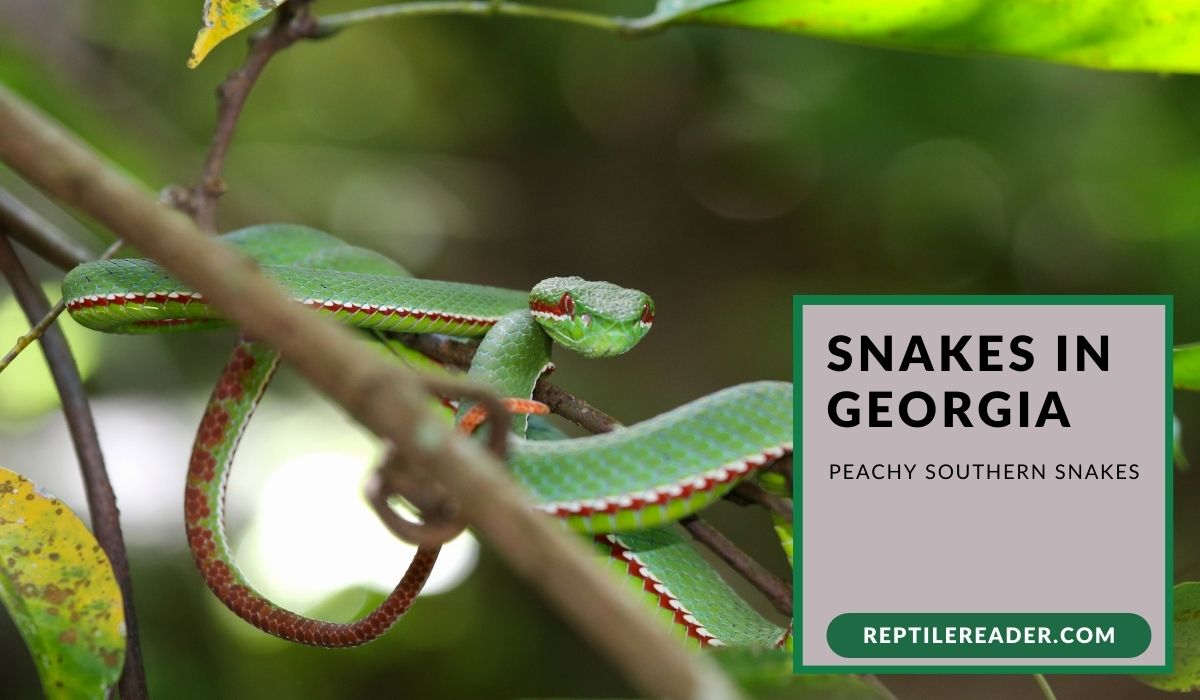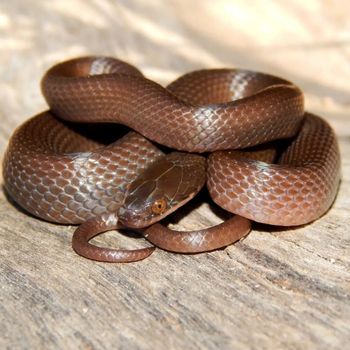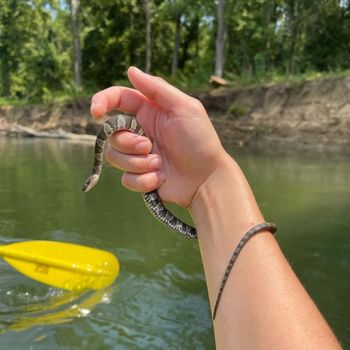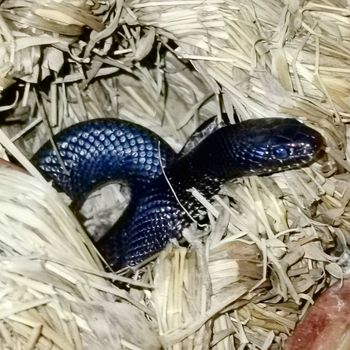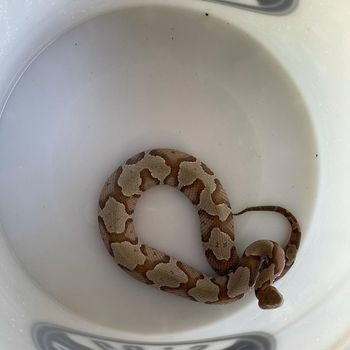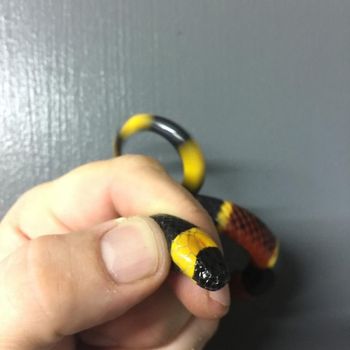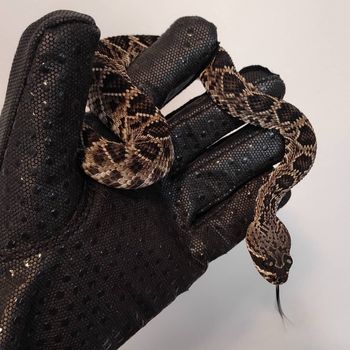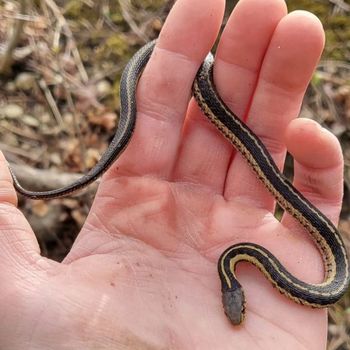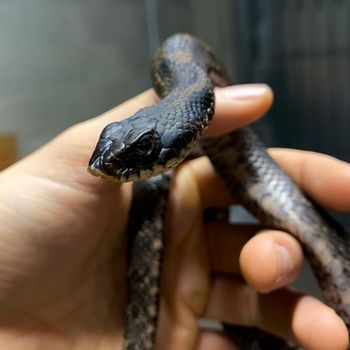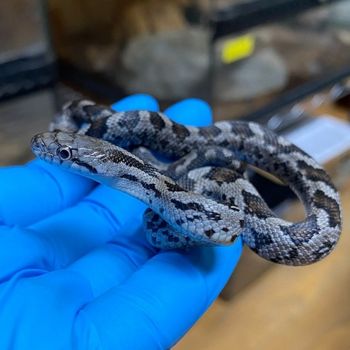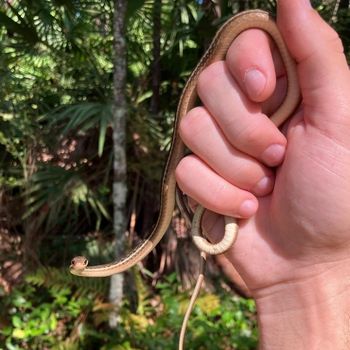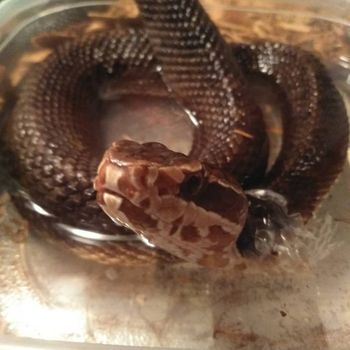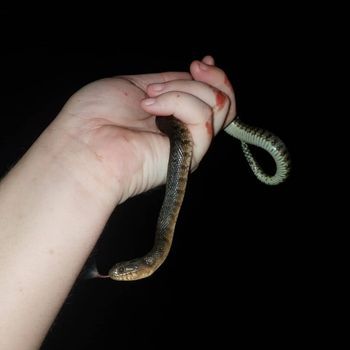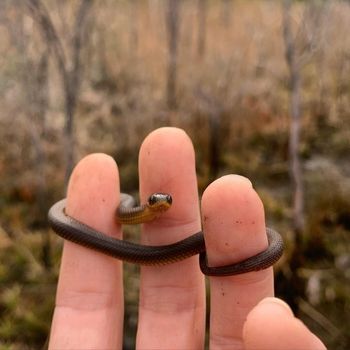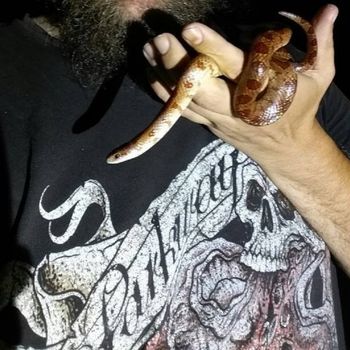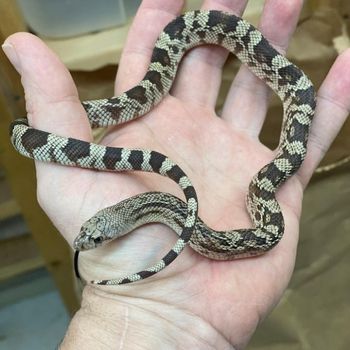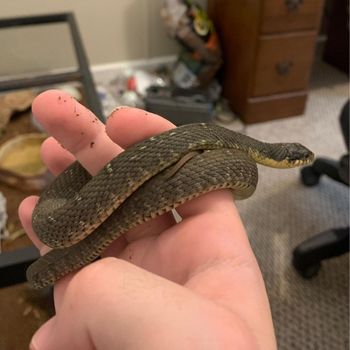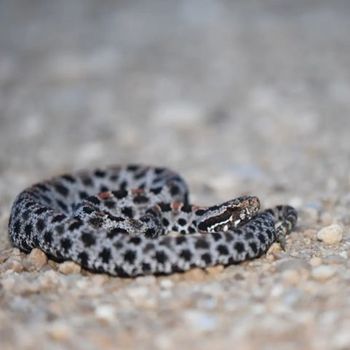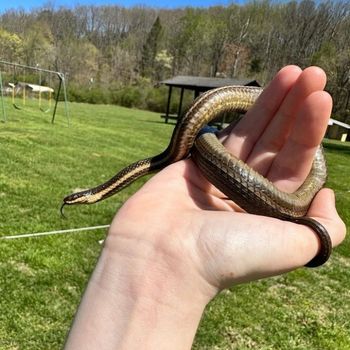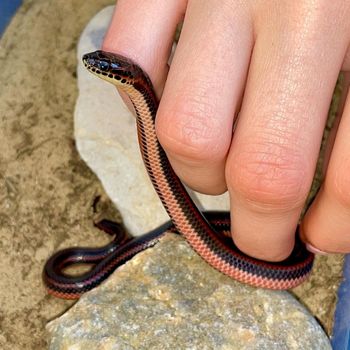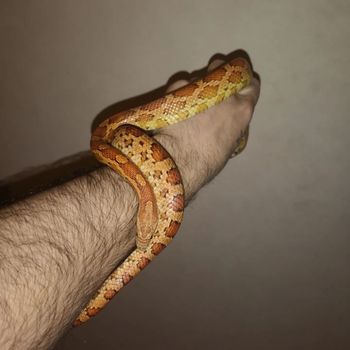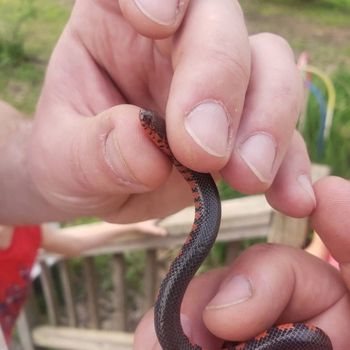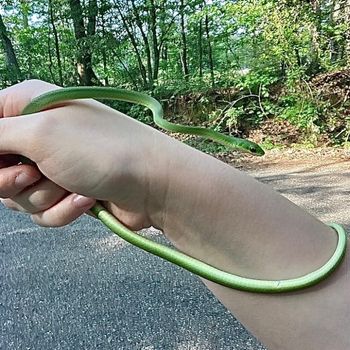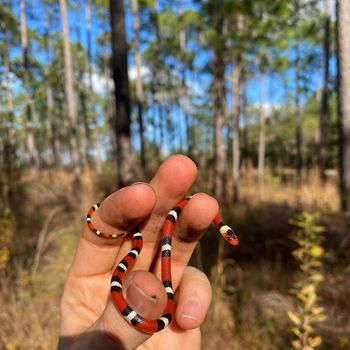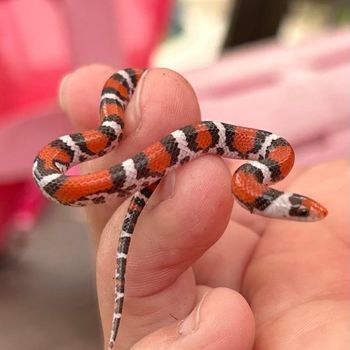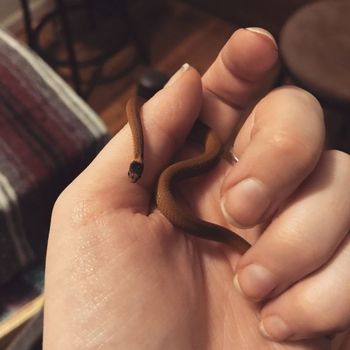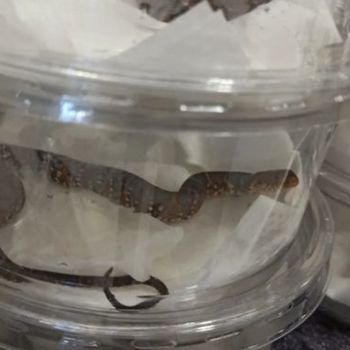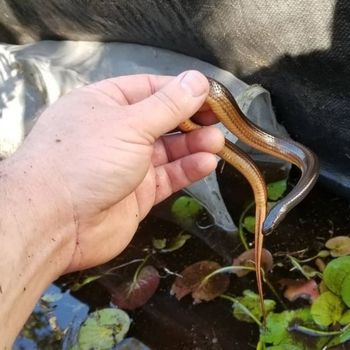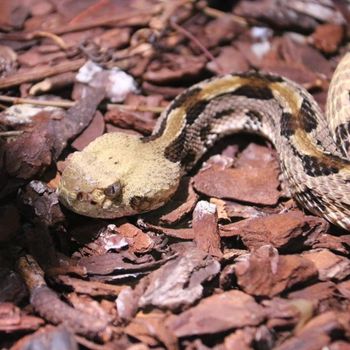Snakes in Georgia: Peachy Southern Snakes
Hey there, snake enthusiasts and fellow nature lovers! Did you know that Georgia is a fantastic place to spot our slithery friends? Spoiler alert: there are 33 different species of snakes crawling through the forests, waters, and even backyards of this beautiful state.
That’s right, among the picturesque landscapes and stunning biodiversity, you’ll find a remarkable variety of scaly creatures, each with their own unique characteristics and behaviors.
So, if you’re keen to know more, grab your boots and let’s venture into the world of Georgian snakes. We’ll guide you through the fascinating species that call this place home. Happy herping! Next, we’ll explore the unique habitats where these snakes can be found and the best times to catch a glimpse of them. From the northern water snake to the eastern hognose snake, you’ll discover a diverse array of reptiles that inhabit this region. And if you’ve ever wondered about snakes in Massachusetts, we’ll cover that too!
| # | Name | Details | Image |
| 1 | Black Swamp Snake (Seminatrix pygaea) |
| 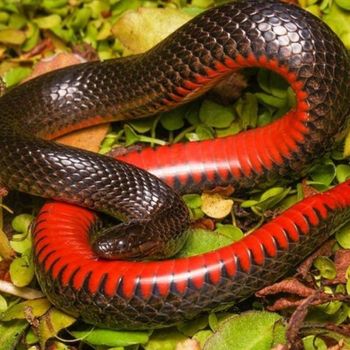 |
| 2 | Brown Water Snake (Lycodonomorphus rufulus) |
| 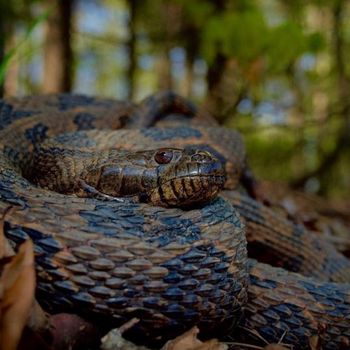 |
| 3 | Common Water Snake (Nerodia sipedon) |
| 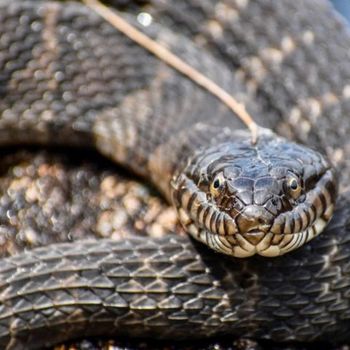 |
| 4 | Dekay’s Brownsnake (Storeria dekayi) |
| 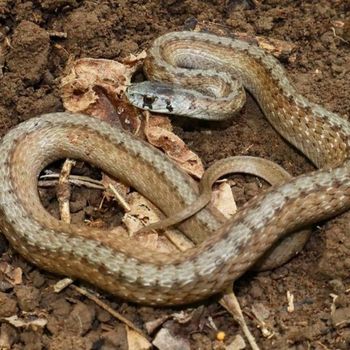 |
| 5 | Eastern Black Kingsnake (Lampropeltis nigra) |
| 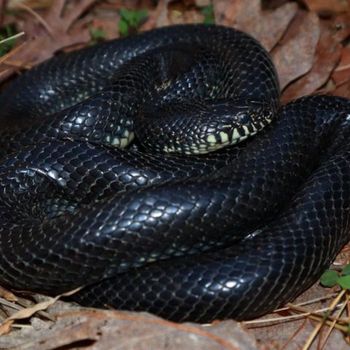 |
| 6 | Eastern Copperhead (Agkistrodon contortrix) |
| 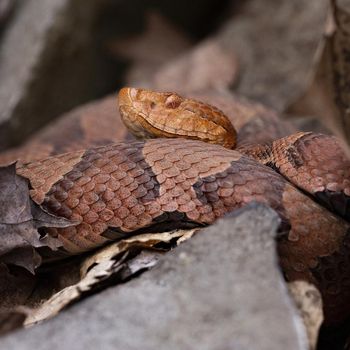 |
| 7 | Eastern Coral Snake (Micrurus fulvius) |
| 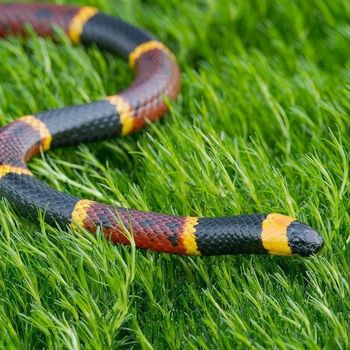 |
| 8 | Eastern Diamondback Rattlesnake (Crotalus adamanteus) |
| 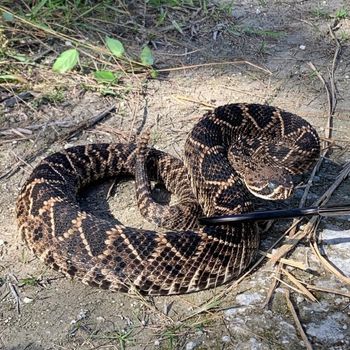 |
| 9 | Eastern Garter Snake (Thamnophis sirtalis sirtalis) |
| 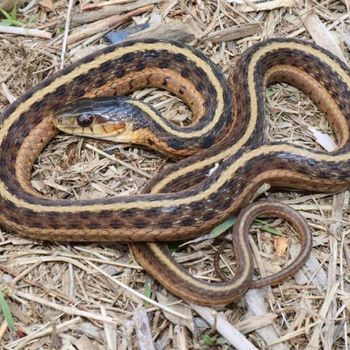 |
| 10 | Eastern Hog-nosed Snake (Heterodon platirhinos) |
| 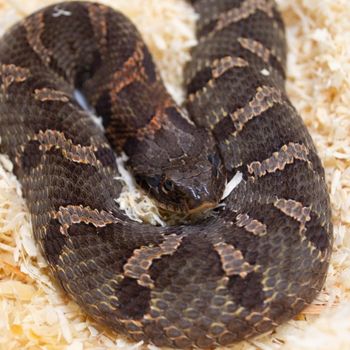 |
| 11 | Eastern Kingsnake (Lampropeltis getula) |
| 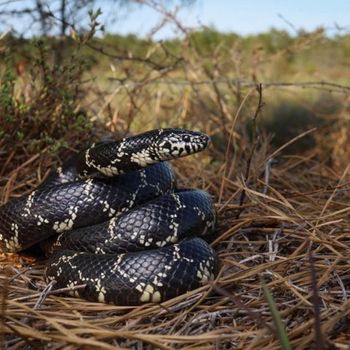 |
| 12 | Eastern Milksnake (Lampropeltis triangulum) |
|  |
| 13 | Eastern Rat Snake (Pantherophis alleghaniensis) |
| 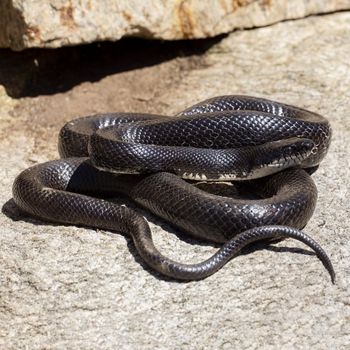 |
| 14 | Eastern Ribbon Snake (Thamnophis sauritus sauritus) |
|  |
| 15 | Florida Cottonmouth (Agkistrodon conanti) |
|  |
| 16 | Florida Green Water Snake (Nerodia floridana) |
| 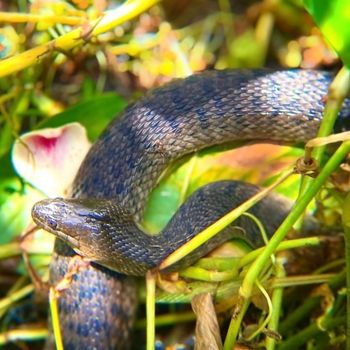 |
| 17 | Glossy Swamp Snake (Liodytes rigida) |
| 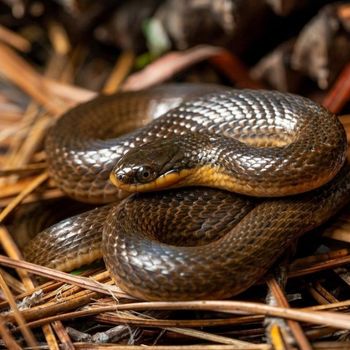 |
| 18 | Northern Cottonmouth (Agkistrodon piscivorus) |
| 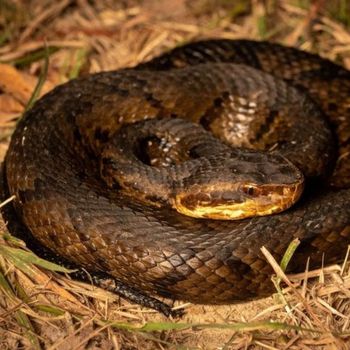 |
| 19 | Northern Mole Kingsnake (Lampropeltis calligaster rhombomaculata) |
| 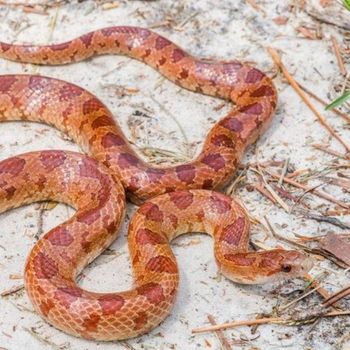 |
| 20 | Pine Snake (Pituophis melanoleucus) |
| 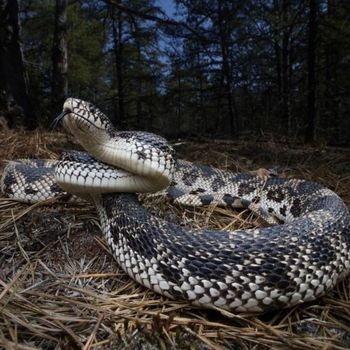 |
| 21 | Plain-bellied Watersnake (Nerodia erythrogaster) |
| 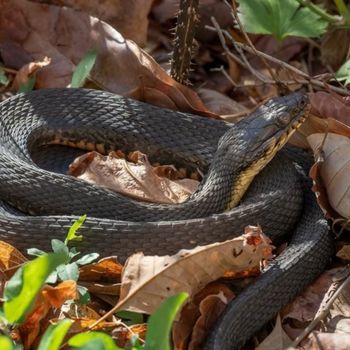 |
| 22 | Pygmy Rattlesnake (Sistrurus miliarius) |
|  |
| 23 | Queen Snake (Regina septemvittata) |
| 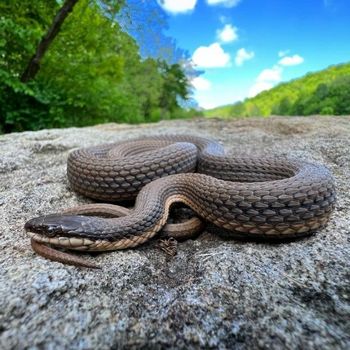 |
| 24 | Rainbow snake (Farancia erytrogramma) |
|  |
| 25 | Red Corn Snake (Pantherophis guttatus) |
| 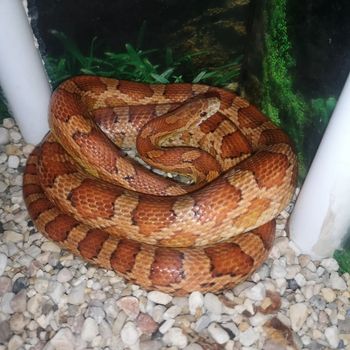 |
| 26 | Red-bellied Mud Snake (Farancia abacura) |
| 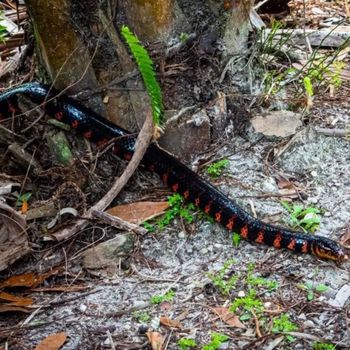 |
| 27 | Rough Green Snake (Opheodrys aestivus) |
| 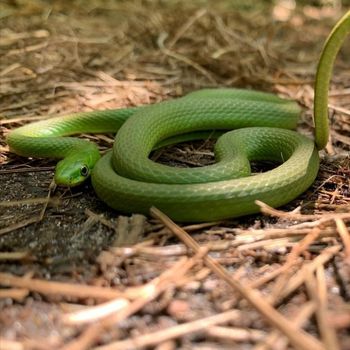 |
| 28 | Scarlet Kingsnake (Lampropeltis elapsoides) |
| 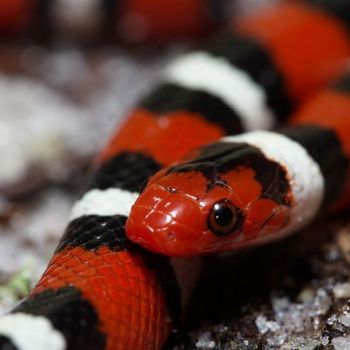 |
| 29 | Scarlet Snake (Cemophora coccinea) |
| 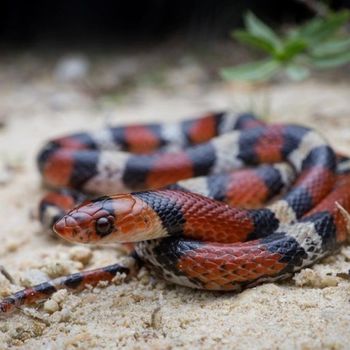 |
| 30 | Southeastern Crowned Snake (Tantilla coronata) |
| 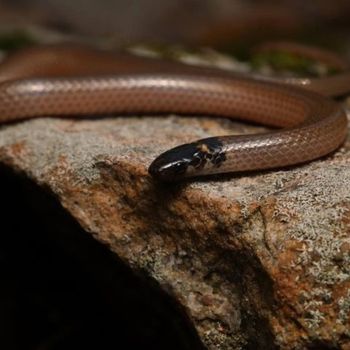 |
| 31 | Southern Watersnake (Nerodia fasciata) |
| 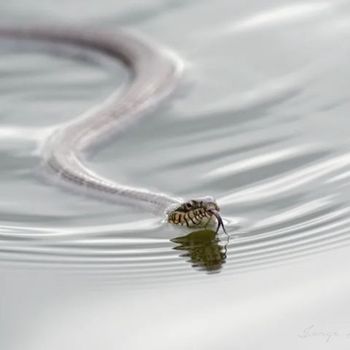 |
| 32 | Striped Crayfish Snake (Regina rigida) |
| 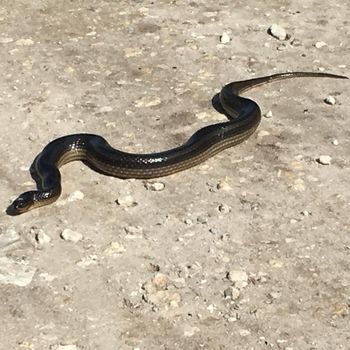 |
| 33 | Timber Rattlesnake (Crotalus horridus) |
|  |
33 Snakes You Can Find in Georgia
In the state of Georgia, a fascinating array of serpents can be found slithering through its diverse landscapes. From venomous to harmless, each species has its unique story to tell. Below, we’ll explore the wonders of these often misunderstood creatures of Georgia, from their natural habitats and behaviors to the challenges they face in our changing world.
1. Black Swamp Snake
- Scientific Name: Seminatrix pygaea
- Common Name: Black swamp snake
- Size: Up to 24 inches (61 centimeters)
- Natural Habitat: Wetland habitats, swamps, and marshes
- Color: Shiny black dorsum and red or orange belly
- Habitat: Wetland habitats, swamps, and marshes
- Maximum Size: Up to 24 inches (61 centimeters)
- Diet: Amphibians, fish, and invertebrates
- Reproduction: Lay eggs in clutches of 2-14
- Venom: Non-venomous
- Conservation: Least concern
The Black Swamp Snake (Seminatrix pygaea) is a non-venomous, primarily aquatic species that can grow up to 24 inches (61 cm) in length. They have a shiny black dorsum and a vibrant red or orange belly, making them easily recognizable. These secretive snakes inhabit wetland environments, such as swamps and marshes of Georgia, where they feed on a diet of amphibians, fish, and invertebrates. Their reproductive habits involve laying egg clutches, usually containing 2-14 eggs. According to conservation status, they are classified as least concern.
2. Brown Water Snake
- Scientific Name: Lycodonomorphus rufulus
- Common Name: Brown water snake
- Size: Up to 2.6 feet (0.8 meters)
- Natural Habitat: Aquatic habitats, such as streams, ponds, and marshes
- Color: Brown with darker bands and a yellow belly
- Habitat: Aquatic habitats, such as streams, ponds, and marshes
- Maximum Size: Up to 2.6 feet (0.8 meters)
- Diet: Fish, frogs, and tadpoles
- Reproduction: Lay eggs in clutches of around 9-11
- Venom: Non-venomous
- Conservation: Least concern
The Lycodonomorphus rufulus, commonly known as the Brown Water Snake, can grow up to 2.6 feet in length. It is characterized by its brown coloring, darker bands, and a yellow belly. The snake that calls Georgia its home predominantly inhabits aquatic environments such as streams, ponds, and marshes. Although nocturnal and terrestrial, it is often found basking on rocks and logs during daytime. Its diet mainly consists of fish, frogs, and tadpoles. The snake lays eggs in clutches of 9-11, is non-venomous, and is considered to have a conservation status of least concern.
3. Common Water Snake
- Scientific Name: Nerodia sipedon
- Common Name: Common water snake
- Size: Up to 4.5 feet (1.4 meters)
- Natural Habitat: Aquatic habitats, including lakes, rivers, and ponds
- Color: Brown or gray with dark bands or blotches
- Habitat: Aquatic habitats, including lakes, rivers, and ponds
- Maximum Size: Up to 4.5 feet (1.4 meters)
- Diet: Fish, frogs, and salamanders
- Reproduction: Give birth to live young in litters of 10-40
- Venom: Non-venomous, but can release a foul-smelling musk
- Conservation: Least concern
The Common Water Snake (Nerodia sipedon) is a non-venomous, nocturnal, semiaquatic reptile that can grow up to 4.5 feet (1.4 meters) in size. Their brown or gray body has dark bands or blotches as markings. Commonly found in aquatic habitats like lakes, rivers, and ponds, this snake’s diet consists of fish, frogs, and salamanders. It reproduces by giving birth to live young in litters containing 10-40 offspring. Although non-venomous, it can release foul-smelling musk in defense. Its conservation status is of least concern.
4. Dekay’s Brownsnake
- Scientific Name: Storeria dekayi
- Common Name: Dekay’s brown snake
- Size: 9-15 inches (23-38 cm)
- Natural Habitat: Forests, grasslands, wetlands, and urban areas
- Color: Brown or gray with dark spots
- Habitat: Forests, grasslands, wetlands, and urban areas
- Maximum Size: 9-15 inches (23-38 cm)
- Diet: Earthworms, slugs, and other soft-bodied invertebrates
- Reproduction: Give birth to live young (ovoviviparous), 3-40 offspring
- Venom: Non-venomous
- Conservation: Least concern
Storeria dekayi, commonly known as Dekay’s Brown Snake, is a small, non-venomous reptile, measuring 9-15 inches (23-38 cm) in length. Its brown or gray body features dark spots, and it inhabits forests, grasslands, wetlands, and urban areas. Exhibiting terrestrial, nocturnal, and secretive behavior, its diet consists primarily of earthworms, slugs, and other soft-bodied invertebrates. A fascinating ovoviviparous species, Dekayís Brown Snake gives birth to live young, bearing 3-40 offspring. Its current conservation status is classified as least concern.
5. Eastern Black Kingsnake
- Scientific Name: Lampropeltis nigra
- Common Name: Eastern black kingsnake
- Size: Up to 4 feet (1.22 meters)
- Natural Habitat: Forests, fields, and wetlands
- Color: Solid black with glossy scales
- Habitat: Forests, fields, and wetlands
- Maximum Size: Up to 4 feet (1.22 meters)
- Diet: Rodents, birds, amphibians, and other snakes
- Reproduction: Lay eggs in clutches of 3-24
- Venom: Non-venomous
- Conservation: Least concern
The Eastern Black Kingsnake (Lampropeltis nigra) is a non-venomous species that can grow up to 4 feet (1.22 meters) in length. This snake is characterized by its solid black coloration and glossy scales. Commonly found in forests, fields, and wetlands, it is mainly a nocturnal and terrestrial creature. Its diet consists of rodents, birds, amphibians, and other snakes. Females lay eggs in clutches of 3-24, and the species has a conservation status of ‘Least Concern.’
6. Eastern Copperhead
- Scientific Name: Agkistrodon contortrix
- Common Name: Eastern copperhead
- Size: Up to 3 feet (90 centimeters)
- Natural Habitat: Forests, swamps, and river bottoms
- Color: Reddish-brown with hourglass-shaped bands
- Habitat: Forests, swamps, and river bottoms
- Maximum Size: Up to 3 feet (90 centimeters)
- Diet: Small rodents, birds, frogs, and insects
- Reproduction: Live-bearing, 2-18 young per litter
- Venom: Venomous, hemotoxic venom
- Conservation: Least concern
The Eastern Copperhead (Agkistrodon contortrix) is a venomous snake that can grow up to 3 feet (90cm) in length. Its distinctive reddish-brown body features hourglass-shaped bands and prefers habitats such as forests, swamps, and river bottoms of Georgia. These nocturnal, terrestrial creatures primarily feed on small rodents, birds, frogs, and insects. Eastern Copperheads are live-bearing, with litters ranging from 2-18 young. Their hemotoxic venom can be dangerous, but their conservation status is considered least concern.
7. Eastern Coral Snake
- Scientific Name: Micrurus fulvius
- Common Name: Eastern coral snake
- Size: Up to 3 feet (0.9 meters)
- Natural Habitat: Forests, marshes, and wooded areas
- Color: Red, yellow, and black bands
- Habitat: Forests, marshes, and wooded areas
- Maximum Size: Up to 3 feet (0.9 meters)
- Diet: Small snakes, lizards, frogs, and rodents
- Reproduction: Lay eggs in clutches of 3-12
- Venom: Highly venomous
- Conservation: Least concern
The Eastern Coral Snake (Micrurus fulvius) is a species of venomous snake adorned with colorful red, yellow, and black bands. This shy, secretive creature reaches up to 3 feet (0.9 meters) in length and is commonly found in forests, marshes, and wooded areas. Though they tend to burrow, Eastern Coral Snakes primarily feed on small snakes, lizards, frogs, and rodents. As part of their reproductive process, they lay eggs in clutches of 3-12. Although highly venomous, their conservation status remains one of least concern.
8. Eastern Diamondback Rattlesnake
- Scientific Name: Crotalus adamanteus
- Common Name: Eastern diamondback rattlesnake
- Size: Up to 8 feet (2.4 meters)
- Natural Habitat: Dry forests, scrub, and coastal areas
- Color: Brown, yellow, and gray with diamond-shaped patterns
- Habitat: Dry forests, scrub, and coastal areas
- Maximum Size: Up to 8 feet (2.4 meters)
- Diet: Rodents, rabbits, small mammals, and birds
- Reproduction: Ovoviviparous, giving birth to 6-21 live young
- Venom: Venomous, potentially dangerous to humans
- Conservation: Least concern
The Eastern Diamondback Rattlesnake (Crotalus adamanteus) is a large, venomous serpent found primarily in dry forests, scrublands, and coastal areas. Reaching up to 8 feet (2.4 meters) in length, they exhibit a distinct coloration of brown, yellow, and gray with diamond-shaped patterns. These nocturnal and terrestrial predators primarily feed on rodents, rabbits, small mammals, and birds. Eastern Diamondbacks are ovoviviparous, giving birth to 6-21 live young. Although their venom is potentially dangerous to humans, their conservation status remains listed as least concern.
9. Eastern Garter Snake
- Scientific Name: Thamnophis sirtalis sirtalis
- Common Name: Eastern garter snake
- Size: Up to 2-4.5 feet (0.6-1.4 meters)
- Natural Habitat: Forests, grasslands, wetlands, and urban areas
- Color: Brown, green or gray with three yellow stripes
- Habitat: Forests, grasslands, wetlands, and urban areas
- Maximum Size: Up to 2-4.5 feet (0.6-1.4 meters)
- Diet: Earthworms, amphibians, fish, and small mammals
- Reproduction: Lay eggs in clutches of 10-40
- Venom: Mildly venomous but harmless to humans
- Conservation: Least concern
The Eastern Garter Snake (Thamnophis sirtalis sirtalis) is a commonly found snake species that can grow up to 2-4.5 feet (0.6-1.4 meters) in length. It displays a brown, green, or gray coloration adorned with three yellow stripes. Inhabitants of forests, grasslands, wetlands and urban areas, these diurnal and terrestrial reptiles primarily feed on earthworms, amphibians, fish, and small mammals. Eastern Garter Snakes reproduce by laying 10-40 eggs per clutch, and although they are mildly venomous, their venom poses little risk to humans. They are currently classified under the least concern category in conservation status.
10. Eastern Hog-nosed Snake
- Scientific Name: Heterodon platirhinos
- Common Name: Eastern hog-nosed snake
- Size: 20-33 inches (51-84 cm)
- Natural Habitat: Woodlands, grasslands, and sandy areas
- Color: Highly variable, typically brown or gray with dark blotches
- Habitat: Woodlands, grasslands, and sandy areas
- Maximum Size: 20-33 inches (51-84 cm)
- Diet: Mostly toads, but also other amphibians and small mammals
- Reproduction: Lay eggs, 4-60 per clutch
- Venom: Mild venom, harmless to humans
- Conservation: Least concern
The Eastern Hog-nosed Snake (Heterodon platirhinos) is a moderately-sized serpent, reaching lengths of 20-33 inches (51-84 cm). Its coloration is highly variable, typically exhibiting brown or gray hues with dark blotches. Inhabiting woodlands, grasslands, and sandy areas, this diurnal snake is known for playing dead when threatened. Its diet mainly consists of toads, along with other amphibians and small mammals. It reproduces by laying 4-60 eggs per clutch, has mild venom harmless to humans, and is classified as of “Least Concern” in conservation efforts.
11. Eastern Kingsnake
- Scientific Name: Lampropeltis getula
- Common Name: Eastern kingsnake
- Size: Up to 4 feet (1.2 meters)
- Natural Habitat: Forests, wetlands, grasslands, and suburban areas
- Color: Black or dark brown with white or yellow bands
- Habitat: Forests, wetlands, grasslands, and suburban areas
- Maximum Size: Up to 4 feet (1.2 meters)
- Diet: Small mammals, birds, reptiles, and amphibians
- Reproduction: Lay eggs in clutches of 3-24
- Venom: Non-venomous
- Conservation: Least concern
The Eastern Kingsnake (Lampropeltis getula) is a non-venomous snake, reaching up to 4 feet (1.2 meters) long. Its black or dark brown body features white or yellow bands. Commonly found in forests, wetlands, grasslands, and suburban areas, these diurnal and terrestrial snakes are known for their diverse diet, feeding on small mammals, birds, reptiles, and amphibians. Eastern Kingsnakes reproduce by laying clutches of 3-24 eggs. They are relatively unthreatened, maintaining a conservation status of “Least Concern.”
12. Eastern Milksnake
- Scientific Name: Lampropeltis triangulum
- Common Name: Eastern milksnake
- Size: Up to 3.9 feet (1.2 meters)
- Natural Habitat: Forests, grasslands, farmlands, and rocky areas
- Color: Reddish-brown with y-shaped black-edged white bands
- Habitat: Forests, grasslands, farmlands, and rocky areas
- Maximum Size: Up to 3.9 feet (1.2 meters)
- Diet: Rodents, small birds, and reptiles
- Reproduction: Lay eggs in clutches of 3-20
- Venom: Non-venomous
- Conservation: Least concern
The Eastern Milksnake (Lampropeltis triangulum) is a non-venomous snake that grows up to 3.9 feet (1.2 meters) in length. It features a reddish-brown color adorned with Y-shaped black-edged white bands. Commonly found in forests, grasslands, farmlands, and rocky areas of Georgia, this nocturnal and terrestrial snake primarily consumes rodents, small birds, and reptiles. Eastern Milksnakes reproduce by laying egg clutches of 3-20. Currently, their conservation status is listed as least concern.
13. Eastern Rat Snake
- Scientific Name: Pantherophis alleghaniensis
- Common Name: Eastern rat snake
- Size: Up to 7 feet (2.1 meters)
- Natural Habitat: Forests, meadows, wetlands, and urban areas
- Color: Black or dark gray with pale gray, tan, or yellow
- Habitat: Forests, meadows, wetlands, and urban areas
- Maximum Size: Up to 7 feet (2.1 meters)
- Diet: Rodents, birds, and bird eggs
- Reproduction: Lay eggs in clutches of 5-27
- Venom: Non-venomous
- Conservation: Least concern
The Eastern Rat Snake (Pantherophis alleghaniensis) is a large, non-venomous reptile that can reach 7 feet (2.1 meters) in length. They have a black or dark gray color with patches of pale gray, tan, or yellow. Found in forests, meadows, wetlands, and urban areas, these semi-arboreal snakes have diurnal or nocturnal behavior depending on temperature. Their diet consists of rodents, birds, and bird eggs. Eastern Rat Snakes reproduce by laying eggs in clutches of 5-27 and have a conservation status marked as “Least Concern.”
14. Eastern Ribbon Snake
- Scientific Name: Thamnophis sauritus sauritus
- Common Name: Eastern ribbon snake
- Size: 18-34 inches (45-86 cm)
- Natural Habitat: Wetlands, swamps, and marshes near water
- Color: Black, greenish, or brown with three distinct light stripes
- Habitat: Wetlands, swamps, and marshes near water
- Maximum Size: 18-34 inches (45-86 cm)
- Diet: Frogs, toads, small fish, and insects
- Reproduction: Lay 3-27 eggs, sometimes communal with other snakes
- Venom: Non-venomous
- Conservation: Least concern
The Eastern Ribbon Snake, scientifically known as Thamnophis sauritus sauritus, is a non-venomous reptile measuring 18-34 inches (45-86 cm). It inhabits wetlands, swamps, and marshes near water and features a distinctive black, greenish, or brown color with three light stripes. Known for their daytime activity and skittish behavior, these snakes are excellent swimmers with a diet comprising frogs, toads, small fish, and insects. They reproduce by laying 3-27 eggs, sometimes communally with other snakes. Their conservation status is of least concern.
15. Florida Cottonmouth
- Scientific Name: Agkistrodon conanti
- Common Name: Florida cottonmouth
- Size: Up to 6 feet (1.8 meters)
- Natural Habitat: Freshwater habitats, such as swamps, marshes, and rivers
- Color: Dark brown or olive with broad, dark crossbands
- Habitat: Freshwater habitats, such as swamps, marshes, and rivers
- Maximum Size: Up to 6 feet (1.8 meters)
- Diet: Fish, amphibians, reptiles, birds, and small mammals
- Reproduction: Give birth to live young, 6-12 per litter
- Venom: Venomous, with hemotoxic venom
- Conservation: Least concern
The Florida Cottonmouth (Agkistrodon conanti), also known as the Agkistrodon conanti, grows up to 6 feet (1.8 meters) and is found in freshwater habitats such as swamps, marshes, and rivers. This semi-aquatic, nocturnal, and territorial snake is dark brown or olive with broad, dark crossbands. Its diet consists of fish, amphibians, reptiles, birds, and small mammals. Florida Cottonmouths give birth to live young, producing 6-12 offspring per litter. They are venomous, with hemotoxic venom, but fortunately, their conservation status is of least concern.
16. Florida Green Water Snake
- Scientific Name: Nerodia floridana
- Common Name: Florida green water snake
- Size: Up to 4.9 feet (1.5 meters)
- Natural Habitat: Aquatic habitats, including marshes, swamps, and ponds
- Color: Dark green to dark brown with obscure, dark crossbands
- Habitat: Aquatic habitats, including marshes, swamps, and ponds
- Maximum Size: Up to 4.9 feet (1.5 meters)
- Diet: Fish, frogs, and tadpoles
- Reproduction: Lay eggs in clutches of 20-40
- Venom: Non-venomous
- Conservation: Least concern
The Florida Green Water Snake (Nerodia floridana) is a non-venomous reptile that can grow up to 4.9 feet (1.5 meters) in length. With a dark green or dark brown coloration and obscured crossbands, these snakes primarily inhabit aquatic environments such as marshes, swamps, and ponds. They are nocturnal creatures and predominantly aquatic, having a diet consisting of fish, frogs, and tadpoles. During reproduction, they lay eggs in clutches of 20-40, and their conservation status is classified as least concern.
17. Glossy Swamp Snake
- Scientific Name: Liodytes rigida
- Common Name: Glossy swamp snake
- Size: Up to 2.5 feet (0.76 meters)
- Natural Habitat: Swamps and wetlands
- Color: Glossy black or dark brown
- Habitat: Swamps and wetlands
- Maximum Size: Up to 2.5 feet (0.76 meters)
- Diet: Amphibians, fish, and invertebrates
- Reproduction: Lay 3-15 eggs in clutches
- Venom: Non-venomous
- Conservation: Least concern
The Glossy Swamp Snake (Liodytes rigida) is a non-venomous, semiaquatic reptile that can grow up to 2.5 feet (0.76 meters) in length. With their glossy black or dark brown color, these nocturnal snakes inhabit swamps and wetlands. Their diet consists of amphibians, fish, and invertebrates. Female Glossy Swamp Snakes lay clutches of 3-15 eggs, a key aspect in their reproduction process. Despite facing natural and human-related threats, they have a conservation status of ‘Least Concern’.
18. Northern Cottonmouth
- Scientific Name: Agkistrodon piscivorus
- Common Name: Northern cottonmouth
- Size: Up to 4 feet (1.2 meters)
- Natural Habitat: Swamps, marshes, streams, and rivers
- Color: Dark brown or black with faint banding
- Habitat: Swamps, marshes, streams, and rivers
- Maximum Size: Up to 4 feet (1.2 meters)
- Diet: Fish, amphibians, and small mammals
- Reproduction: Live bearing, giving birth to 1-16 young
- Venom: Venomous, hemotoxic venom
- Conservation: Least concern
The Northern Cottonmouth (Agkistrodon piscivorus) is a dark brown or black venomous snake, reaching up to 4 feet (1.2 meters). It features faint banding and inhabits swamps, marshes, streams, and rivers. As a semi-aquatic, nocturnal, and aggressive creature, it primarily preys on fish, amphibians, and small mammals. This snake is live-bearing, producing litters of 1-16 young. Its hemotoxic venom is potent but poses a low risk to humans, as it is classified under the least concern conservation status.
19. Northern Mole Kingsnake
- Scientific Name: Lampropeltis calligaster rhombomaculata
- Common Name: Northern mole kingsnake
- Size: Up to 4 feet (1.2 meters)
- Natural Habitat: Woodlands, meadows, and grasslands, often near water
- Color: Brown or gray with light-bordered dark blotches
- Habitat: Woodlands, meadows, and grasslands, often near water
- Maximum Size: Up to 4 feet (1.2 meters)
- Diet: Small mammals, birds, frogs, and other snakes
- Reproduction: Mating in spring, laying 5-15 eggs in early summer
- Venom: Non-venomous
- Conservation: Not listed, but likely least concern
The Northern Mole Kingsnake (Lampropeltis calligaster rhombomaculata) is a non-venomous snake that can reach up to 4 feet (1.2 meters) in length. Its color varies from brown to gray with light-bordered dark blotches. Mainly found in woodlands, meadows, and grasslands near water, this nocturnal and fossorial species prefers to feed on small mammals, birds, frogs, and other snakes. Mating takes place in spring, with females laying 5-15 eggs in early summer. Though not officially listed, the species is likely of least concern in terms of conservation.
20. Pine Snake
- Scientific Name: Pituophis melanoleucus
- Common Name: Pine snake
- Size: Up to 7 feet (2.1 meters)
- Natural Habitat: Forests, fields, and sandy areas
- Color: Cream, tan, or gray with dark splotches
- Habitat: Forests, fields, and sandy areas
- Maximum Size: Up to 7 feet (2.1 meters)
- Diet: Rodents and other small mammals, occasionally birds and eggs
- Reproduction: Lay eggs in clutches of 3-24
- Venom: Non-venomous
- Conservation: Least concern
The Pine Snake (Pituophis melanoleucus) is a large, non-venomous reptile that can reach up to 7 feet (2.1 meters) in length. Its primary colors include cream, tan, and gray with dark splotches. Native to forests, fields, and sandy areas, they are primarily terrestrial and fossorial creatures. Pine Snakes feed on rodents and small mammals, and occasionally birds and eggs. They reproduce by laying egg clutches, consisting of 3-24 eggs. Pine Snake’s conservation status is listed as least concern.
21. Plain-bellied Watersnake
- Scientific Name: Nerodia erythrogaster
- Common Name: Plain-bellied watersnake
- Size: 24-40 inches (61-102 cm)
- Natural Habitat: Rivers, lakes, ponds, and wetlands
- Color: Olive, brown, or gray with a yellow, orange, or red unmarked belly
- Habitat: Rivers, lakes, ponds, and wetlands
- Maximum Size: 24-40 inches (61-102 cm)
- Diet: Fish, frogs, and other amphibians
- Reproduction: Live-bearing; 5-29 offspring per litter
- Venom: Non-venomous
- Conservation: Least concern
The Plain-bellied Watersnake (Nerodia erythrogaster) is a semi-aquatic, non-venomous snake measuring 24-40 inches (61-102 cm) in length. It features an olive, brown, or gray coloration with a distinct yellow, orange, or red unmarked belly. As adept swimmers, they inhabit rivers, lakes, ponds, and wetlands, with diurnal behavior. Their diet primarily consists of fish, frogs, and other amphibians. These snakes are live-bearing, producing 5-29 offspring per litter. Currently, their conservation status is of least concern.
22. Pygmy Rattlesnake
- Scientific Name: Sistrurus miliarius
- Common Name: Pygmy rattlesnake
- Size: Up to 24 inches (61 centimeters)
- Natural Habitat: Woodlands, grasslands, floodplains, and wetlands
- Color: Gray, tan, or reddish-brown with dark blotches
- Habitat: Woodlands, grasslands, floodplains, and wetlands
- Maximum Size: Up to 24 inches (61 centimeters)
- Diet: Small mammals, amphibians, reptiles, and insects
- Reproduction: Give birth to 5-12 live young
- Venom: Venomous, but not typically dangerous to healthy adults
- Conservation: Least concern
The Pygmy Rattlesnake (Sistrurus miliarius) is a small venomous snake residing in of Georgia and measures up to 24 inches in length. It exhibits a gray, tan, or reddish-brown color with dark blotches along its body. Inhabiting woodlands, grasslands, floodplains, and wetlands, this nocturnal and terrestrial creature feasts on small mammals, amphibians, reptiles, and insects. The Pygmy Rattlesnake reproduces by giving birth to 5-12 live young, and while its venom is not typically dangerous to healthy adults, it should be respected. The conservation status is currently listed as least concern.
23. Queen Snake
- Scientific Name: Regina septemvittata
- Common Name: Queen snake
- Size: Up to 3 feet (0.9 meters)
- Natural Habitat: Streams, creeks, and other aquatic environments
- Color: Olive, brown or gray with three stripes and cream or yellowish belly
- Habitat: Streams, creeks, and other aquatic environments
- Maximum Size: Up to 3 feet (0.9 meters)
- Diet: Crayfish and other small aquatic invertebrates
- Reproduction: Lay eggs in clutches of 4-14
- Venom: Non-venomous
- Conservation: Least concern
The Queen Snake (Regina septemvittata) is a non-venomous reptile growing up to 3 feet (0.9 meters) in length. Often sporting olive, brown, or gray coloration, this snake displays three distinctive stripes and a yellowish belly. It thrives in aquatic habitats such as streams and creeks, and is highly active during the day. Queen Snakes primarily feed on crayfish and other small aquatic invertebrates. They lay eggs in clutches of 4-14, and currently face no significant conservation threats.
24. Rainbow snake
- Scientific Name: Farancia erytrogramma
- Common Name: Rainbow snake
- Size: Up to 5.5 feet (1.67 meters)
- Natural Habitat: Aquatic habitats, such as rivers, lakes, and swamps
- Color: Black with colorful red or pink stripes
- Habitat: Aquatic habitats, such as rivers, lakes, and swamps
- Maximum Size: Up to 5.5 feet (1.67 meters)
- Diet: Eels and other small fish
- Reproduction: Lay eggs in clutches of 10-20
- Venom: Non-venomous
- Conservation: Least concern
The Rainbow Snake (Farancia erytrogramma) is a colorful, non-venomous aquatic serpent, growing up to 5.5 feet (1.67 meters) in length. Boasting a sleek black body with vibrant red or pink stripes, it is commonly found in rivers, lakes, and swamps. This secretive, nocturnal snake feeds primarily on eels and other small fish. Rainbow Snakes lay eggs in clutches of 10-20, and despite their elusive nature, are considered to be of least concern in terms of conservation status.
25. Red Corn Snake
- Scientific Name: Pantherophis guttatus
- Common Name: Corn snake or red rat snake
- Size: Up to 6 feet (1.8 meters)
- Natural Habitat: Forests, grasslands, and abandoned buildings
- Color: Reddish-orange with black-bordered red blotches
- Habitat: Forests, grasslands, and abandoned buildings
- Maximum Size: Up to 6 feet (1.8 meters)
- Diet: Rodents, birds, and eggs
- Reproduction: Lay eggs in clutches of 10-30
- Venom: Non-venomous
- Conservation: Least concern
The Red Corn Snake (Pantherophis guttatus), also known as the Red Rat Snake, is a non-venomous snake species with a reddish-orange color and distinct black-bordered red blotches. It can grow up to 6 feet (1.8 meters), inhabiting various environments, including forests, grasslands, and abandoned buildings. These nocturnal, semi-arboreal creatures primarily feed on rodents, birds, and eggs. Corn snakes reproduce by laying 10-30 eggs in clutches and are currently deemed a species of least concern in conservation status.
26. Red-bellied Mud Snake
- Scientific Name: Farancia abacura
- Common Name: Red-bellied mud snake
- Size: Up to 40 inches (102 cm)
- Natural Habitat: Swamps, bogs, and slow-moving bodies of water
- Color: Black with red or pink belly
- Habitat: Swamps, bogs, and slow-moving bodies of water
- Maximum Size: Up to 40 inches (102 cm)
- Diet: Amphibians, especially salamanders
- Reproduction: Oviparous, 4-14 eggs per clutch
- Venom: Non-venomous
- Conservation: Least concern
The Red-bellied Mud Snake (Farancia abacura) is a semi-aquatic, non-venomous reptile that can grow up to 40 inches (102 cm) long. These snakes are characterized by their striking black coloration and vibrant red or pink belly. Typically found in swamps, bogs, and slow-moving bodies of water, they are nocturnal and skilled swimmers with a diet primarily consisting of amphibians, especially salamanders. Red-bellied Mud Snakes are oviparous, producing 4-14 eggs per clutch. Currently, their conservation status is listed as least concern.
27. Rough Green Snake
- Scientific Name: Opheodrys aestivus
- Common Name: Rough green snake
- Size: 22-32 inches (56-81 cm)
- Natural Habitat: Forests, grasslands, and areas near water sources
- Color: Bright green with a lighter belly
- Habitat: Forests, grasslands, and areas near water sources
- Maximum Size: 22-32 inches (56-81 cm)
- Diet: Insects and spiders
- Reproduction: Lay eggs in clutches of 3-12
- Venom: Non-venomous
- Conservation: Least concern
The Rough Green Snake (Opheodrys aestivus) is a vibrant, non-venomous reptile that measures between 22-32 inches (56-81 cm) in length. Its dazzling bright green coloration is accentuated by a lighter belly, making it well-camouflaged in its preferred habitats of forests, grasslands, and areas near water sources. Known for their diurnal, arboreal behavior, these skillful climbers of Georgia primarily consume insects and spiders. Rough Green Snakes reproduce by laying clutches of 3-12 eggs, and their conservation status is currently classified as least concern.
28. Scarlet Kingsnake
- Scientific Name: Lampropeltis elapsoides
- Common Name: Scarlet kingsnake
- Size: Up to 20 inches (50 cm)
- Natural Habitat: Forests, woodlands, and populated areas with cover
- Color: Red, black, and yellow or white bands
- Habitat: Forests, woodlands, and populated areas with cover
- Maximum Size: Up to 20 inches (50 cm)
- Diet: Small reptiles and amphibians, especially lizards and skinks
- Reproduction: Lay eggs in clutches of 3-12
- Venom: Non-venomous
- Conservation: Least concern
The Scarlet Kingsnake (Lampropeltis elapsoides) is a strikingly colored serpent, growing up to 20 inches (50 cm) long with vivid red, black, and yellow or white bands. Inhabiting forests, woodlands, and populated areas offering cover, this nocturnal and secretive snake primarily preys on small reptiles and amphibians, particularly lizards and skinks. Non-venomous and laying eggs in clutches of 3-12, the Scarlet Kingsnake is currently categorized as “least concern” in terms of conservation status.
29. Scarlet Snake
- Scientific Name: Cemophora coccinea
- Common Name: Scarlet snake
- Size: Up to 20-30 inches (50-76 cm)
- Natural Habitat: Forests, grasslands, and suburban areas
- Color: Red or orangish with black bands and a white or yellowish underbelly
- Habitat: Forests, grasslands, and suburban areas
- Maximum Size: Up to 20-30 inches (50-76 cm)
- Diet: Reptile eggs, small rodents, and lizards
- Reproduction: Lays eggs in clutches of 3-8
- Venom: Non-venomous
- Conservation: Least concern
The Scarlet Snake (Cemophora coccinea) is a non-venomous, nocturnal reptile found in forests, grasslands, and suburban areas. Measuring up to 20-30 inches (50-76 cm) in length, it features striking red or orangish scales with black bands and a white or yellowish underbelly. This burrowing snake has a diet consisting of reptile eggs, small rodents, and lizards. Females lay eggs in clutches of 3-8. With a conservation status of least concern, the Scarlet Snake continues to thrive in its habitats.
30. Southeastern Crowned Snake
- Scientific Name: Tantilla coronata
- Common Name: Southeastern crowned snake
- Size: Up to 10 inches (25 centimeters)
- Natural Habitat: Wooded areas, under rocks, logs, or leaf litter
- Color: Blackish-brown with a yellowish-white collar
- Habitat: Wooded areas, under rocks, logs, or leaf litter
- Maximum Size: Up to 10 inches (25 centimeters)
- Diet: Centipedes, beetle larvae, and small insects
- Reproduction: Lay eggs in clutches of 2-4
- Venom: Non-venomous
- Conservation: Least concern
The Southeastern Crowned Snake (Tantilla coronata) is a small, non-venomous serpent, which measures up to 10 inches (25 cm) in length. Sporting a blackish-brown body with a distinct yellowish-white collar, these reptiles inhabit wooded areas, hiding beneath rocks, logs, and leaf litter. Characterized by their nocturnal and secretive behavior, they primarily feed on centipedes, beetle larvae, and small insects. Southeastern Crowned Snakes reproduce by laying clutches of 2-4 eggs, and their conservation status is marked as Least Concern.
31. Southern Watersnake
- Scientific Name: Nerodia fasciata
- Common Name: Southern watersnake
- Size: Up to 4 feet (1.2 meters)
- Natural Habitat: Aquatic habitats, including swamps, marshes, and rivers
- Color: Gray or brown with dark bands
- Habitat: Aquatic habitats, including swamps, marshes, and rivers
- Maximum Size: Up to 4 feet (1.2 meters)
- Diet: Fish, frogs, and small mammals
- Reproduction: Lay eggs in clutches of 10-30
- Venom: Non-venomous
- Conservation: Least concern
The Southern Watersnake (Nerodia fasciata) is a semi-aquatic, nocturnal reptile, growing up to 4 feet (1.2 meters) in length. It has a gray or brown coloration with dark bands and thrives in aquatic habitats such as swamps, marshes, and rivers of Georgia. This non-venomous snake primarily feeds on fish, frogs, and small mammals. Reproducing through laying egg clutches of 10-30, the Southern Watersnake has a conservation status of “least concern” due to its widespread and stable population.
32. Striped Crayfish Snake
- Scientific Name: Regina rigida
- Common Name: Striped crayfish snake
- Size: Up to 20 inches (51 cm)
- Natural Habitat: Aquatic habitats, such as streams, ponds, and marshes
- Color: Black with narrow red or orange stripes
- Habitat: Aquatic habitats, such as streams, ponds, and marshes
- Maximum Size: Up to 20 inches (51 cm)
- Diet: Crayfish and aquatic invertebrates
- Reproduction: Lay eggs in clutches of 4-12
- Venom: Non-venomous
- Conservation: Least concern
The Striped Crayfish Snake (Regina rigida) is a non-venomous aquatic snake measuring up to 20 inches (51 cm) in length. Its distinct black coloration features narrow red or orange stripes, making it easily identifiable. Found in aquatic habitats like streams, ponds, and marshes, it is a nocturnal and secretive species with a diet primarily consisting of crayfish and aquatic invertebrates. The snake reproduces by laying eggs in clutches of 4-12. Currently, its conservation status is listed as ‘Least Concern’.
33. Timber Rattlesnake
- Scientific Name: Crotalus horridus
- Common Name: Timber rattlesnake
- Size: Up to 6 feet (1.8 meters)
- Natural Habitat: Forests, mixed woodlands, and rocky hillsides
- Color: Yellow, brown, gray, or black with dark bands
- Habitat: Forests, mixed woodlands, and rocky hillsides
- Maximum Size: Up to 6 feet (1.8 meters)
- Diet: Rodents, birds, and small mammals
- Reproduction: Viviparous, giving birth to 4-14 live young
- Venom: Hemotoxic venom
- Conservation: Least concern
The Timber Rattlesnake, scientifically known as Crotalus horridus, is a solitary, ambush predator that can grow up to 6 feet (1.8 meters) in length. It comes in various colors, including yellow, brown, gray, or black with dark bands, and inhabits forests, mixed woodlands, and rocky hillsides. Its diet consists of rodents, birds, and small mammals. Unlike most snakes, the Timber Rattlesnake is viviparous, giving birth to 4-14 live young. It possesses hemotoxic venom, and its conservation status is currently listed as least concern.
Nearby States:
Final Words
All the 33 snakes have truly opened our eyes to the fascinating world of snakes found in Georgia. Who knew there were so many different types of these slithering reptiles, each with their own unique characteristics and habitats?
Not only did we get a chance to learn about some of the more common and well-known species, but we also delved into the lesser-known and often misunderstood ones.
So, the next time you’re out and about in Georgia, keep an eye out for these incredible creatures, and let’s continue to appreciate and protect the diverse wildlife that makes our world so interesting!
How Do Snakes in Utah Compare to Snakes Found in Georgia?
Snakes in Utah and Georgia differ in habitat and species variety. While Georgia boasts more moisture-loving species like water moccasins, snakes native to utah’s beehive state are adapted to drier, desert environments. Both regions host a diverse range of non-venomous and venomous species, with unique adaptations to their climates.
What Types of Snakes Can Be Found in Georgia as Well?
In Georgia, you can find a variety of snake species, including the Eastern Indigo Snake, the Eastern Diamondback Rattlesnake, and the Eastern Coral Snake. These are just a few examples of the diverse snake population in the region. If you’re interested in snakes in tennessee, you’ll find similar species and maybe a few more.

